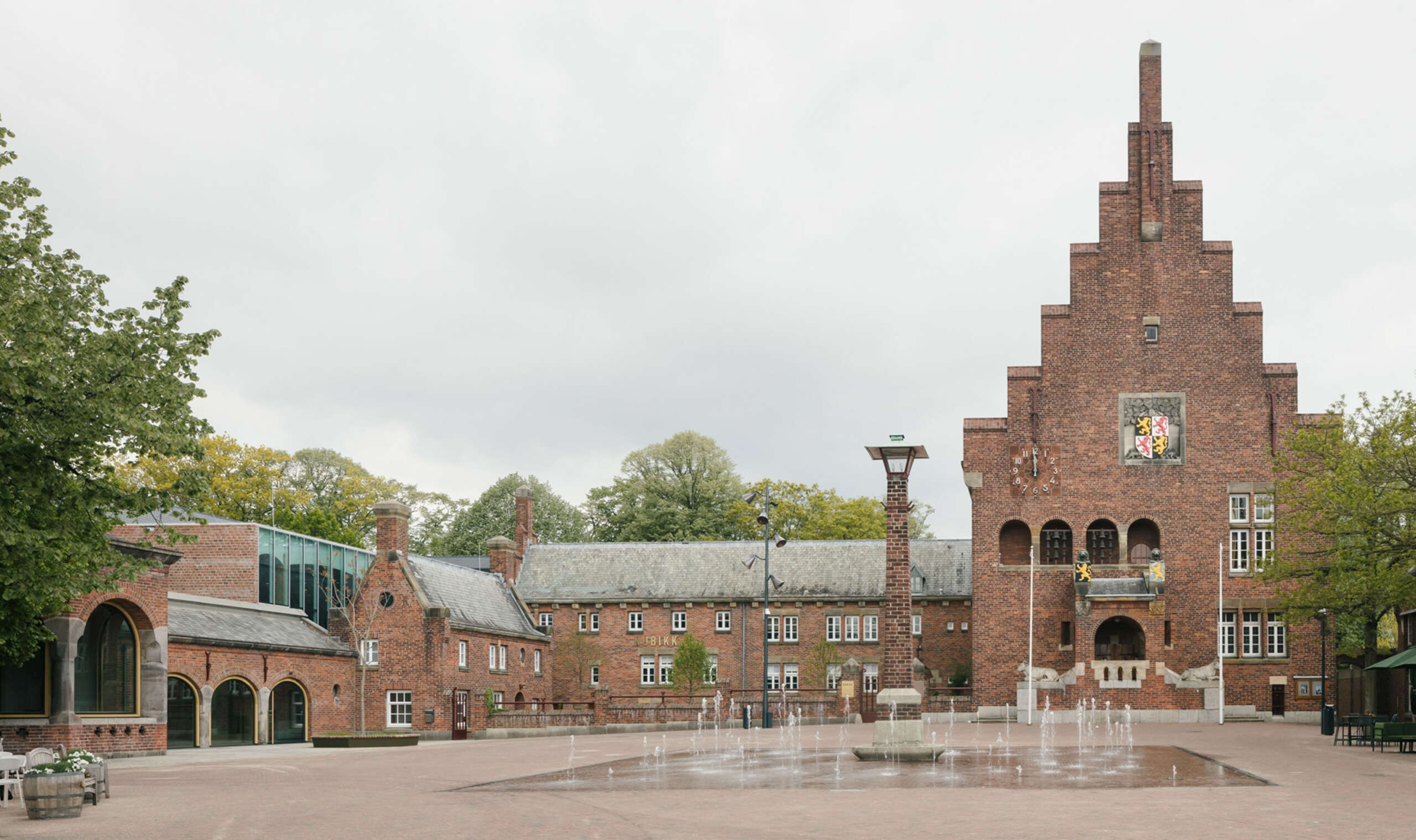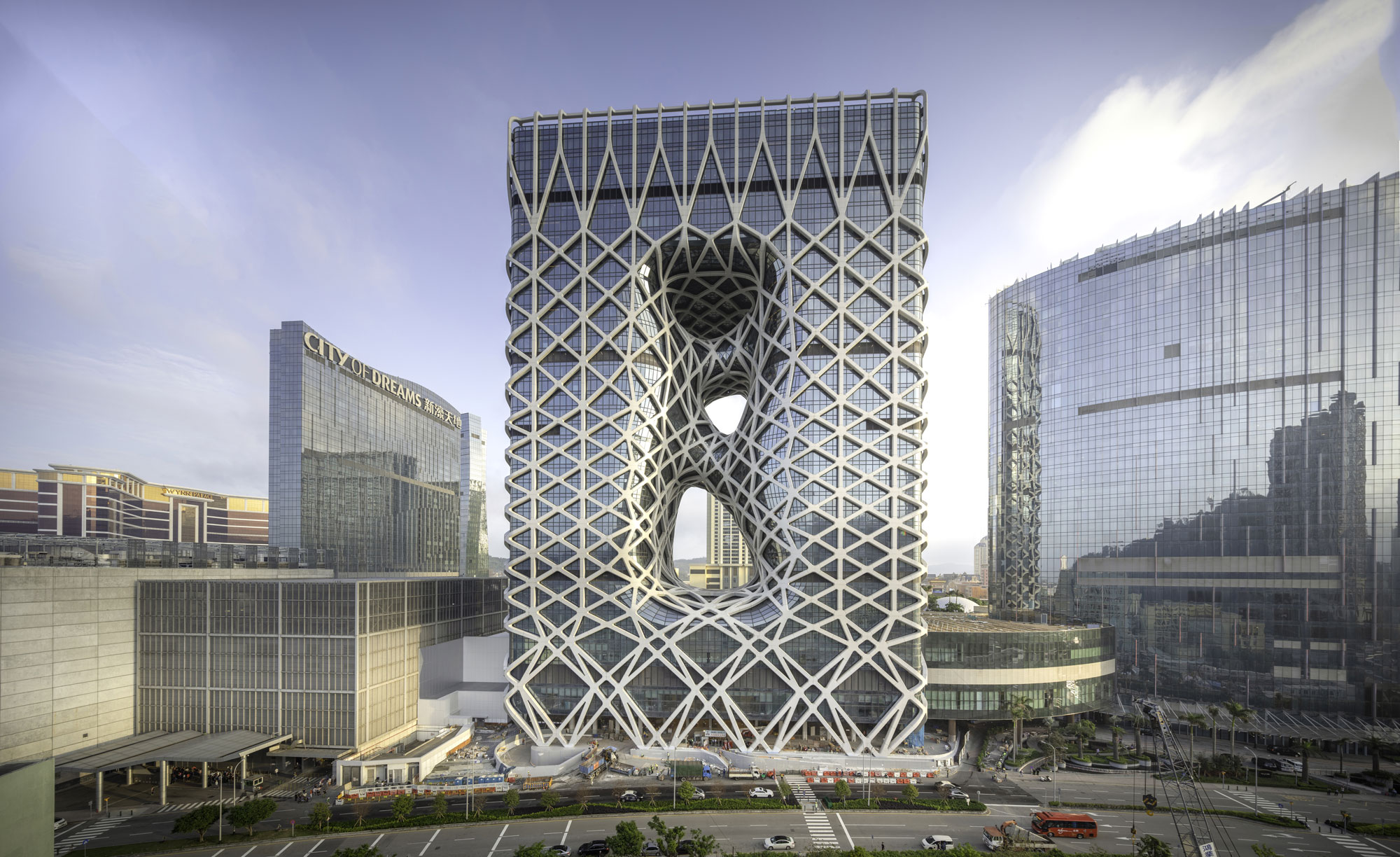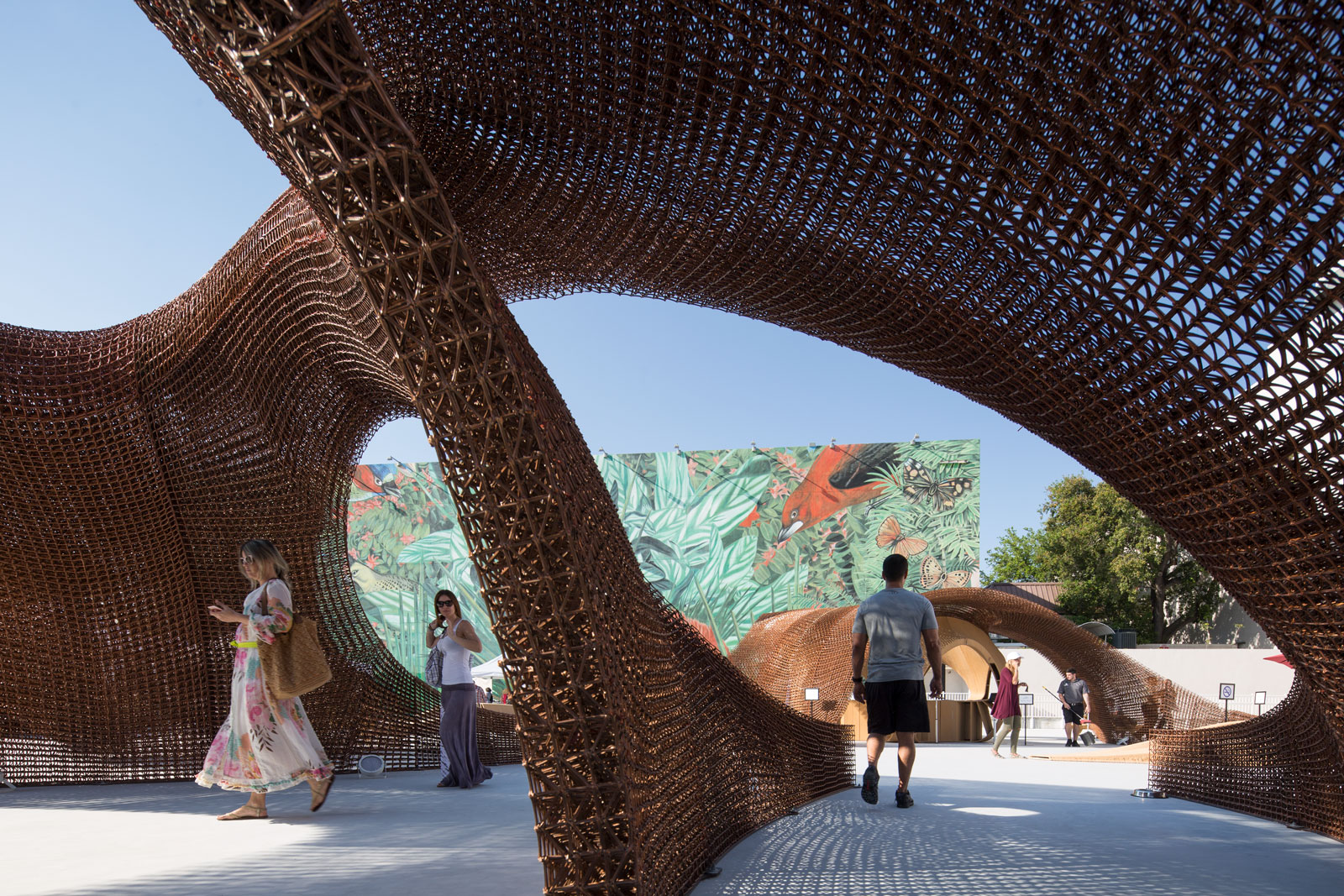
FLO & JET | SHOP ARCHITECTS
What does the name mean?
Description provided by SHoP Architects. The name is a playful reference to the sea and a nod to the impermanent nature of the project. Flotsam is the old nautical term for salvage found floating on the ocean (as in, after a shipwreck). Jetsam is cargo deliberately thrown overboard (as in, to lighten the load in a storm).
What was the inspiration?
“At once glamorously amorphous and rigorously defined, the dual pavilions of “Flotsam & Jetsam” evoke the geometries of current-borne sea life from diatoms to jellyfish. In their form and mode of fabrication, the pavilions also pay homage to the spirit of collaboration that is an increasingly necessary precondition for success in creative work of every type, including the enterprises now finding a home in Miami’s own surging innovation sector… By evoking a specifically Miami sense of seaside glamor in an environment realized through progressive creative methods, “Flotsam & Jetsam” seeks to be both a celebration of the city as it has long existed in the popular imagination and an evocation of what it can become.” Excerpt from the project description (attached)
What is it made of?
Our partners at BRANCH TECHNOLOGY (Chattanooga) and OAK RIDGE NATIONAL LABORATORY (Nashville) each contributed a proprietary 3D printing method to the project.
BRANCH: Carbon-fiber reinforced ABS via a robotic arm (truss/web components)
OAK RIDGE: Biodegradable bamboo polymer via a large-bed 3D printer (benches/bar)
Who else did we partner with? DASSAULT, the entire project was designed and managed on the 3DEXPERIENCE platform, and TT, for engineering.
Is it sustainable?
Two methods explored in Flo & Jet, the biodegradable bamboo material and the use of structural 3D printing, are part of a promising palette of techniques architects are developing to pursue low-carbon construction in the future.
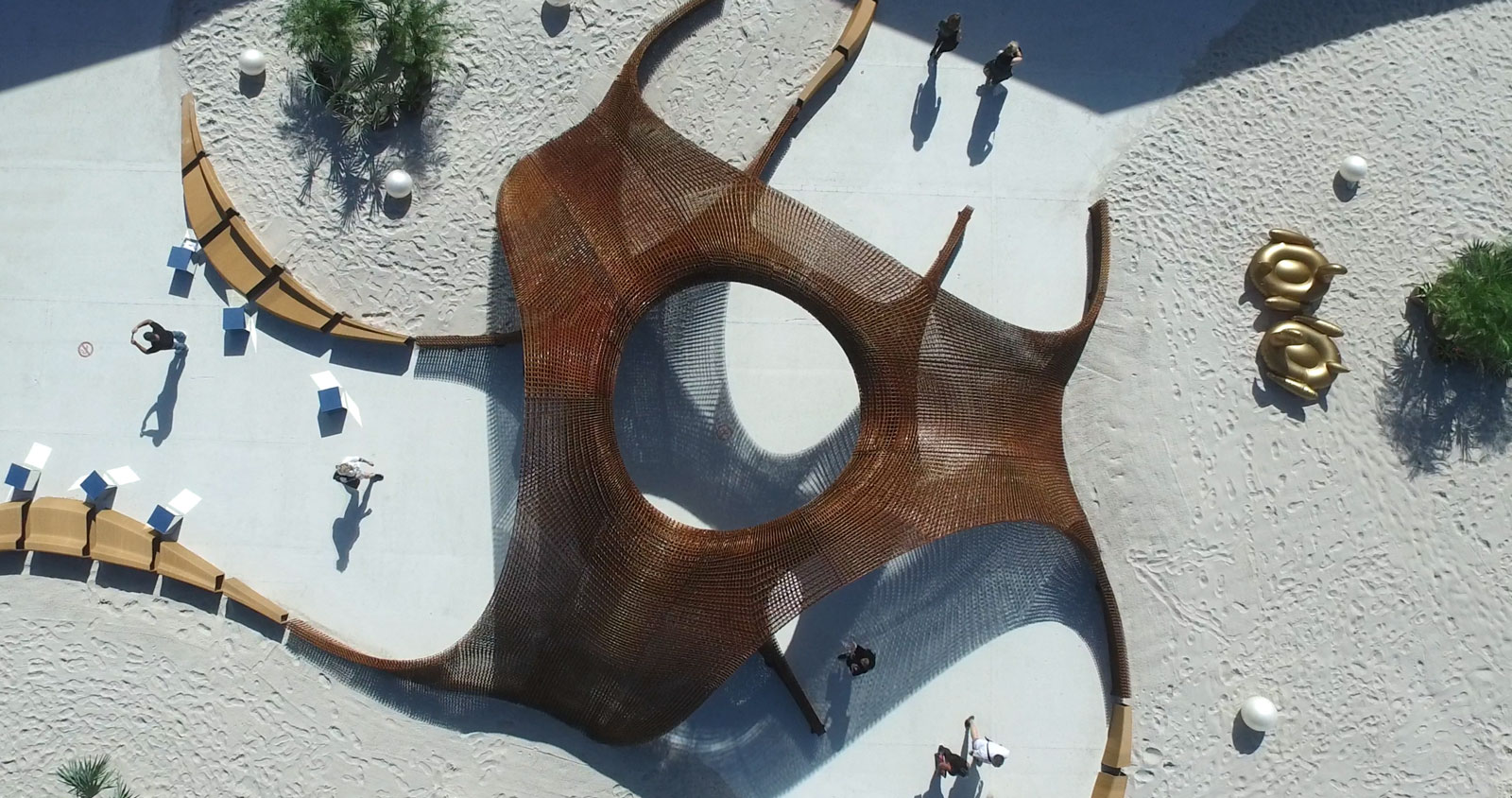
What’s next?
After Design Miami, Flotsam & Jetsam will be reinstalled in the Miami Design District’s iconic Jungle Plaza to house an outdoor cultural event space for long-term public enjoyment. The space will be launched with the Institute of Contemporary Art, Miami (ICA Miami) in Spring/Summer 2017 alongside a signature community program for bringing the world-class public sculpture to the city.
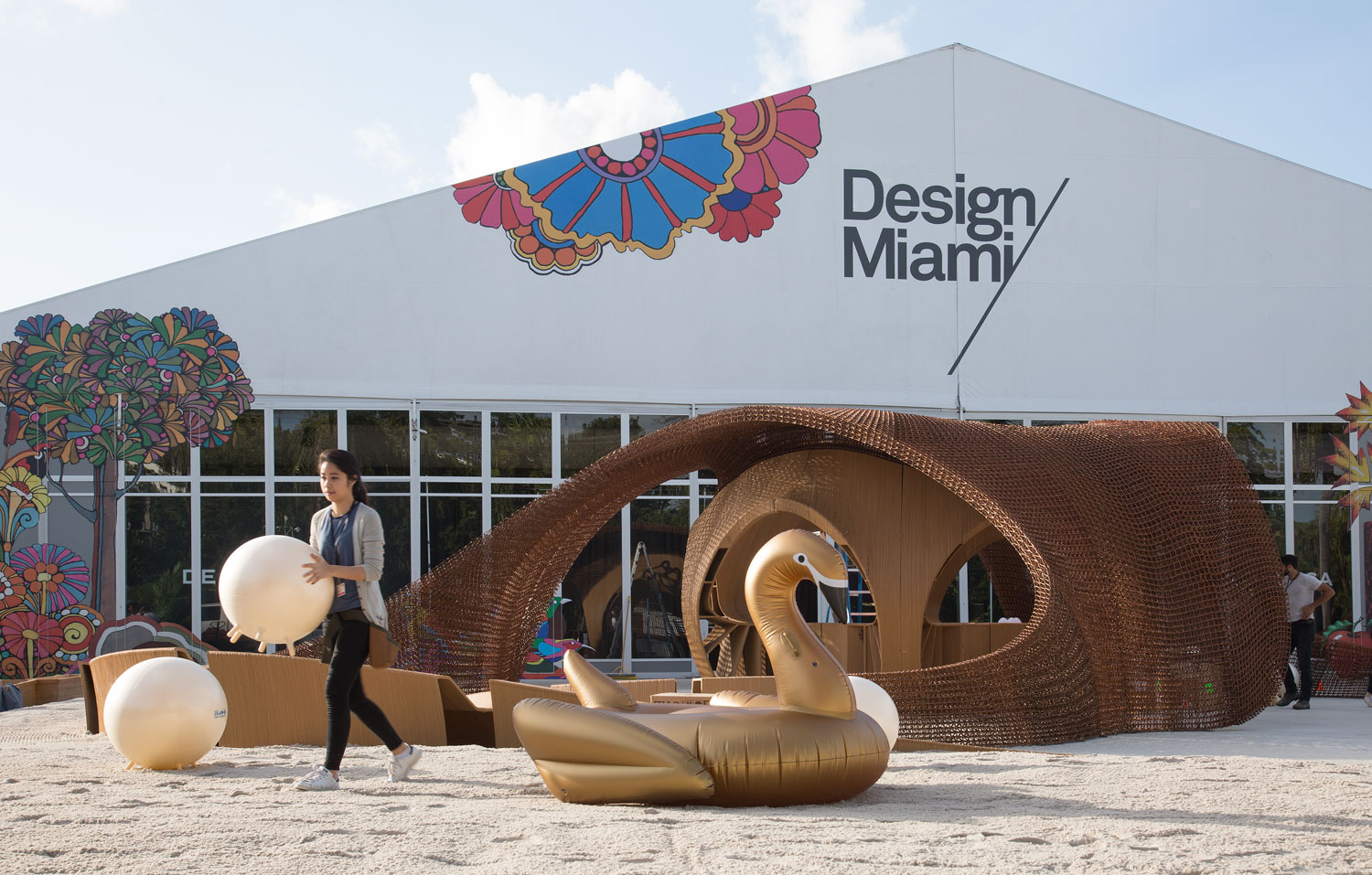
Fun Facts
- Heights: Pavilion A, approximately 13’; Pavilion B (bar pavilion), approximately 11’-6”
- Pavilion A alone has 27 MILES of material (carbon-fiber reinforced ABS), if each strut-length were unfolded and laid end-to-end. Further than from Miami to Fort Lauderdale!
- Pavilion B has approximately 20 MILES of material. Combined, the total output of the Branch Technologies components would stretch from Miami to Boca Raton!
- Branch Technologies deployed three robots to complete their part of the construction: Rudy, Tex, and Walker.
- Rudy’s build envelope is 47.7’ x 5.6’ x 7.5’ (AKA enormous because track-mounted)
- Tex and Walker build within a 16.6’ x 5.1’ x 7.2’ envelope (fixed mount)
- The largest Branch Technologies panel is approximately 20’ x 7’ and weighs 300 lbs. Size of the panels was limited by the doors of the factory and the bed of the trucks used for transportation.
- One of the 12 segments of the ORNL bamboo printing weighs 695 lbs!
- Average weight of the ORNL bamboo “tentacles” is 250-300 lbs.
- The bamboo print medium is 100% bio-bases, biodegradable, and sustainably harvested—a true “material of the future.”
The environment that SHoP Architects has conceived at the gateway to this year’s Design Miami exhibition seeks to make visible two qualities—one evident, one latent—in the understanding of the city today. It exists at the intersection of Miami’s celebrated spirit of play, represented by a relocated landscape that mimics the beach, but also the city’s emergent function—demonstrated by the art and design fairs themselves— as a center for creative visioning and technological discovery.
Symbols commonly associated with the beach—sand, parasols, float toys, and even a hint of nighttime phosphorescence—create a ludic foreground for two printed structures that serve as a locus for social and educational encounter. In its explorations of contour, action, process, and materiality, “Flotsam & Jetsam” also aspires to create a link between Design Miami and the physically and conceptually adjacent operations at Miami Art Basel. The installation will have a life after the event as well when it is demounted and reconstructed as a semi-permanent public amenity at the Miami Design District’s vibrant “Jungle Plaza.”
At once glamorously amorphous and rigorously defined, the dual pavilions of “Flotsam & Jetsam” evoke the geometries of current-borne sea life from diatoms to jellyfish. In their form and mode of fabrication, the pavilions also pay homage to the spirit of collaboration that is an increasingly necessary precondition for success in creative work of every type, including the enterprises now finding a home in Miami’s own surging innovation sector.
Project partners Branch Technology have adapted two industrial robots to implement its pioneering work: using a proprietary method they call Cellular FabricationTM to bring 3D printing out of the realm of prototyping and table-top production and into broader use as a full-scale, practical means of construction. Due to variations in their technical specifications, the product possible from each robot varies along known limits. SHoP celebrated these constraints, determining the form, dimensionality, and structural spans of the pavilions so that each one requires the collaboration of both robots. A close examination of the finished pavilions, themselves a meditation on natural and machine- determined form, may even reveal the “hand” of these eerily anthropomorphic industrial tools that are destined to play an increasing role in forming our shared human environments.
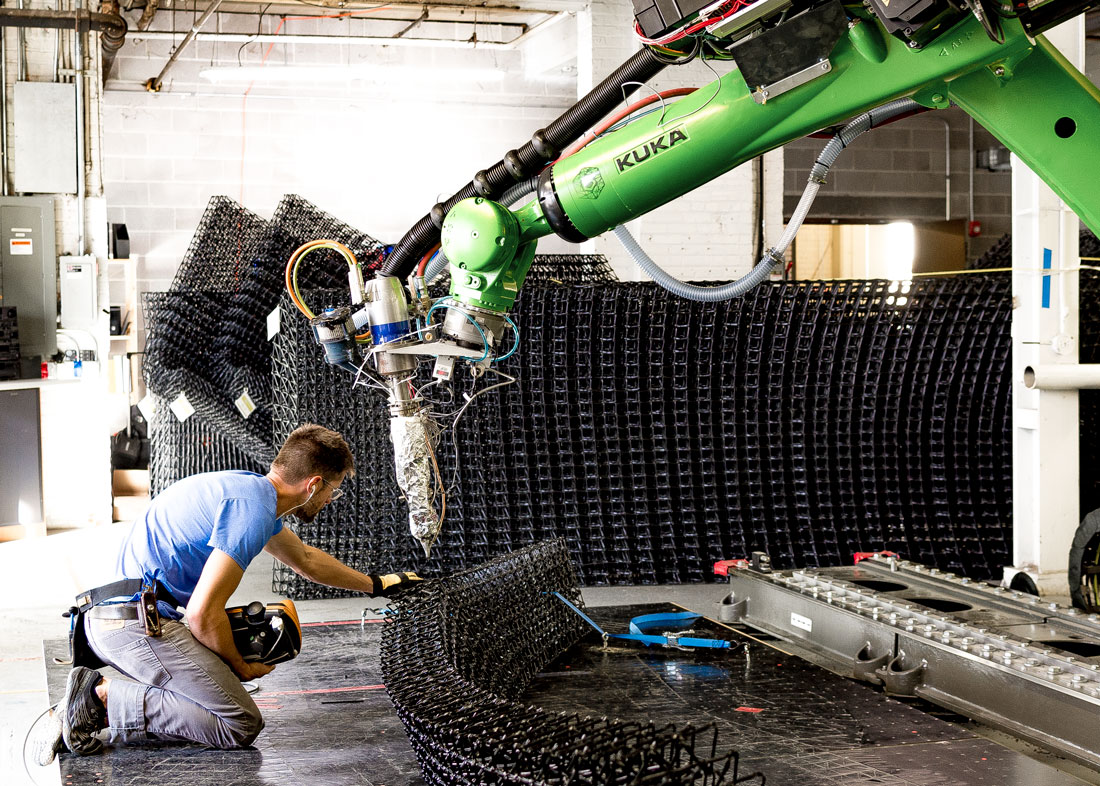
Concept Text
A second material printing technology, bringing with it another set of opportunities and constraints, was provided by the Oak Ridge National Laboratory. The contrasting method used by ORNL— which employs a biodegradable bamboo print medium—is also capable of enormous output sizes.
In order to optimize an exploration of the possibilities of the print medium, and to create instruction sets suitable for communicating clearly with the production team (in this case, crucially, the robots themselves), SHoP leveraged a longstanding partnership with Dassault Systèmes. Dassault is an international leader in developing creative design and project management platforms optimized for 3D production and direct-to-fabrication methodologies. Using its 3DEXPERIENCE product for all stages including conceptual development, in the design of “Flotsam & Jetsam” SHoP was able to exploit the software’s potential for merging freewheeling creative generation and rigorous production into a single process flow. This mode of working streamlined as well the fruitful integration of the team’s engineering consultants, Thornton Thomasetti, who were tasked with determining and verifying full-scale loading requirements on the printed construction media employed.
Taken together, the installation developed by SHoP, the project team, and our partners at Design Miami presents in microcosm a method of thinking and making that holds the potential to revolutionize the expressive potential of collaborative design in real-world conditions. By evoking a specifically Miami sense of seaside glamor in an environment realized through progressive creative methods, “Flotsam & Jetsam” seeks to be both a celebration of the city as it has long existed in the popular imagination and an evocation of what it can become.
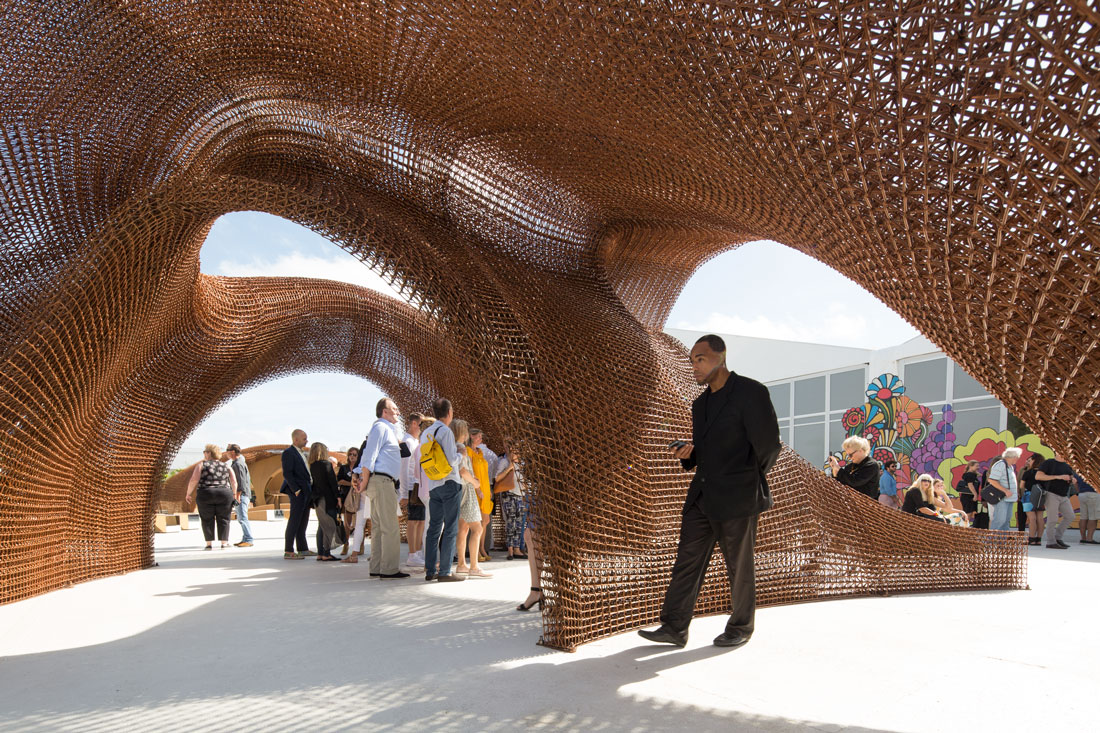
3D Printing Partners
Branch Technology
Oak Ridge Nat. Lab
Role on Project: 3D printed pavilion Located in Knoxille, Branch TechnologyTM has combined 3D Printing, industrial robotics, and conventional building materials to enable a new way to build. Cellular FabricationTM is the next evolution of construction, using 3D printed structures as scaffolds, to which are applied conventional materials forming the structure, insulation, and finishes of a building. Customers are able to build designs long dreamt of, but which have never before been within the financial reach of normal construction budgets. Oak Ridge National Laboratory
Role on Project: 3D printed bamboo bar and seating Located in Nashville, ORNL is the largest science and energy national laboratory managed by the US Dept. of Energy. ORNL’s scientific programs focus on materials, neutron science, energy, high-performance computing, systems biology, and national security.

